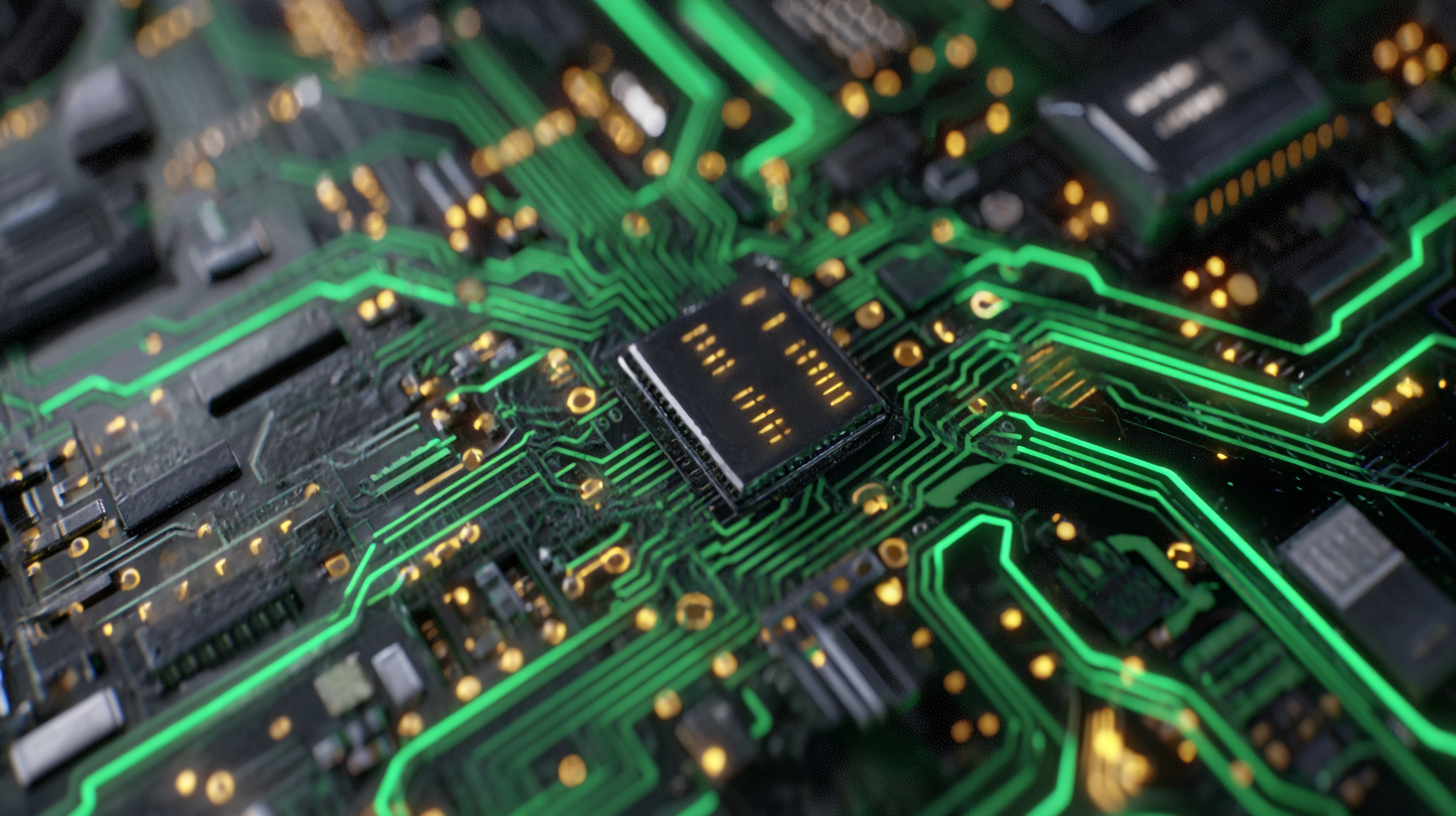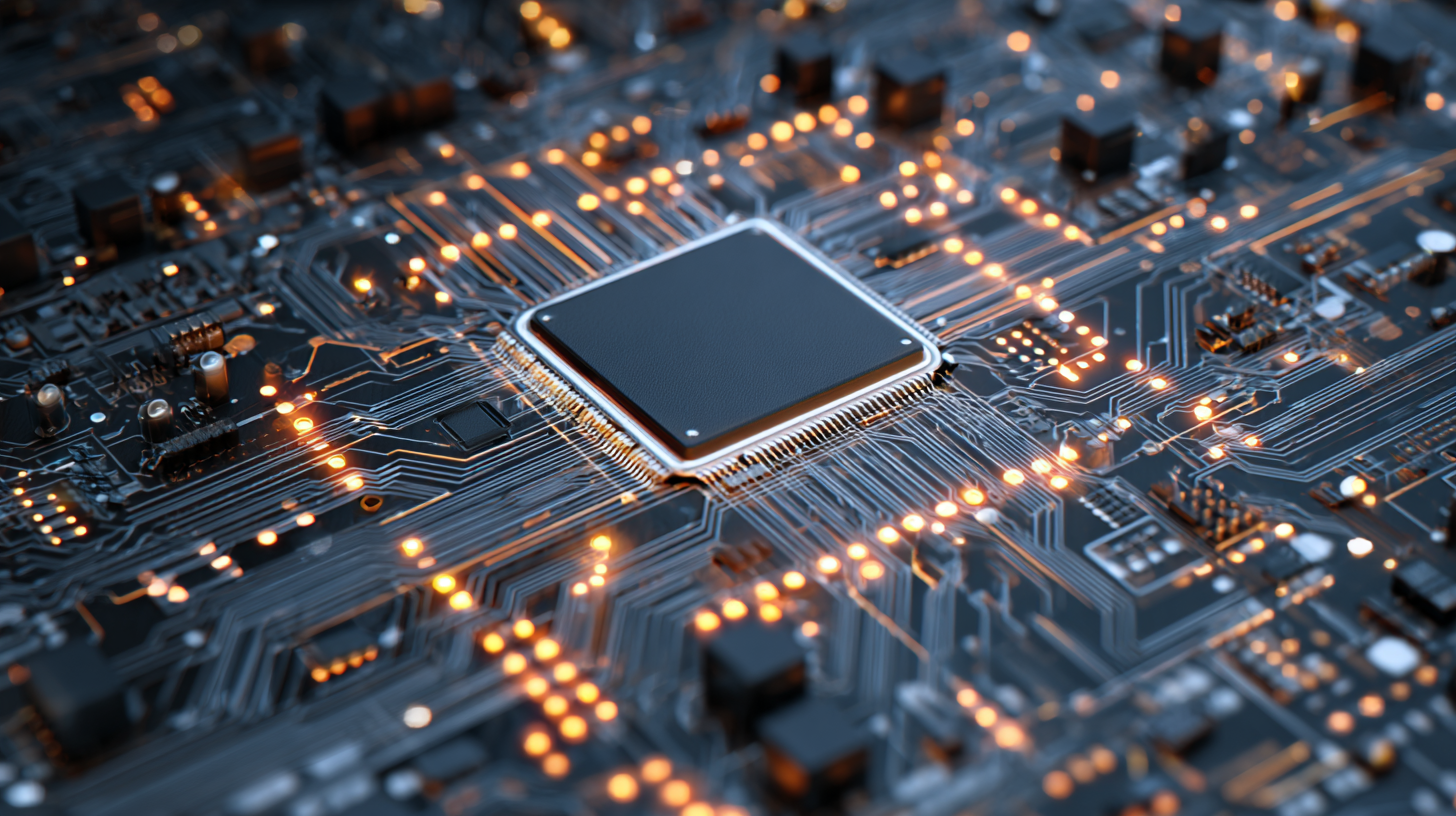JHY PCB Blog Hub
Your Source for Expert PCB Design, Manufacturing, and Assembly Insights – Stay Informed with 2025 Trends!
2025 Global Insights on Best Prototype Circuit Board Manufacturing Trends
 As we look ahead to 2025, the landscape of Prototype Circuit Board manufacturing is poised for significant transformation, driven by advancements in technology and increasing market demands. According to a recent report by Research and Markets, the global circuit board market is anticipated to reach $74.6 billion by 2025, reflecting a CAGR of 4.1%. This growth is largely attributed to the rising adoption of smart devices and the Internet of Things (IoT), which necessitate more sophisticated prototype circuit board designs. Additionally, a report from Mordor Intelligence indicates that manufacturers are prioritizing efficiency and sustainability, incorporating advanced materials and automation technologies to streamline production processes. As we explore the best trends shaping the industry, businesses must adapt to these shifts to remain competitive in a rapidly evolving market.
As we look ahead to 2025, the landscape of Prototype Circuit Board manufacturing is poised for significant transformation, driven by advancements in technology and increasing market demands. According to a recent report by Research and Markets, the global circuit board market is anticipated to reach $74.6 billion by 2025, reflecting a CAGR of 4.1%. This growth is largely attributed to the rising adoption of smart devices and the Internet of Things (IoT), which necessitate more sophisticated prototype circuit board designs. Additionally, a report from Mordor Intelligence indicates that manufacturers are prioritizing efficiency and sustainability, incorporating advanced materials and automation technologies to streamline production processes. As we explore the best trends shaping the industry, businesses must adapt to these shifts to remain competitive in a rapidly evolving market.
Current Innovations in Circuit Board Prototyping Techniques for 2025
As we look toward 2025, the world of circuit board prototyping is rapidly evolving with innovative techniques that improve efficiency and cost-effectiveness. One of the most significant trends is the integration of artificial intelligence in the design process. AI-driven tools can optimize layouts and predict issues before prototypes are even built, resulting in faster turnaround times and lower development costs.
**Tip:** Consider using AI-powered design software to streamline your prototyping process. Not only can these tools enhance precision, but they also reduce the likelihood of errors during the design phase.

**Tip:** Explore 3D printing services that specialize in circuit boards, as they provide flexibility in design and material selection. This can lead to innovative products that stand out in a competitive market, giving your prototyping efforts a distinct advantage.
Sustainable Materials: Shaping the Future of Prototype Circuit Boards
In the ever-evolving landscape of prototype circuit board manufacturing, sustainable materials are playing a pivotal role in shaping the future. As industries strive to minimize their environmental footprint, the use of eco-friendly materials like biodegradable polymers and recycled metals is becoming increasingly prevalent. These materials not only reduce waste but also enhance the overall efficiency of circuit boards, paving the way for greener manufacturing practices.
Tip: When selecting materials for your prototype circuit boards, consider the lifecycle analysis of each option. This will help you understand the environmental impact from production to disposal. Companies that prioritize sustainability often find that consumers are more willing to support their businesses, fostering a loyal customer base.
Moreover, the push for sustainability is driving innovation in manufacturing techniques. Advanced technologies such as 3D printing and additive manufacturing are enabling the creation of complex prototypes with minimal waste. By embracing these methods, manufacturers can improve production efficiency while adhering to eco-friendly practices.
Tip: Collaborate with suppliers who share a commitment to sustainability. This partnership can lead to sourcing high-quality, sustainable materials and also provide you insights into emerging trends that align with green manufacturing. By working together, you can ensure that your circuits not only perform excellently but also represent a responsible choice for the planet.
Automation and AI: Streamlining Circuit Board Manufacturing Processes
As we look towards 2025, the integration of automation and artificial intelligence (AI) in circuit board manufacturing is transforming the landscape of the industry. These advanced technologies enable manufacturers to streamline their processes, reducing production times and minimizing errors. Automated systems equipped with AI can monitor and adjust parameters in real-time, ensuring optimal performance and quality control during the manufacturing cycle. This level of precision not only enhances the reliability of circuit boards but also fosters innovation by allowing engineers to focus on more complex design challenges.

Moreover, the utilization of AI algorithms in predictive maintenance is revolutionizing how manufacturers approach equipment management. By analyzing data from various machinery components, AI can foresee potential failures and suggest timely repairs, thereby reducing downtime and saving costs. This proactive approach ensures that production lines run smoothly, meeting the increasing demands for high-performance circuit boards. As we progress in this digital era, embracing automation and AI technologies will undoubtedly shape the future of circuit board manufacturing, paving the way for greater efficiency and advanced capabilities in electronic products.
The Role of IoT in Enhancing Prototype Circuit Board Design
The advent of the Internet of Things (IoT) is revolutionizing the landscape of prototype circuit board design, facilitating unprecedented levels of connectivity and functionality. By integrating IoT technology, designers can create circuit boards that not only meet functionality requirements but also adapt and respond to real-time data. This shift allows for smarter products that can self-diagnose issues, optimize power consumption, and provide valuable insights into usage patterns.
Tips for enhancing your prototype circuit board using IoT include:
- First, incorporate sensors that monitor environmental conditions; this data can improve both performance and durability.
- Secondly, utilize cloud-based platforms for data collection and analysis, enabling you to refine your designs based on user feedback and performance metrics.
- Lastly, consider modular designs that allow for easy upgrades and maintenance, ensuring longevity and adaptability in an ever-evolving tech landscape.
By making IoT a core component of your circuit board design strategy, you not only enhance the board’s functionality but also position your products for greater market competitiveness. Embracing these trends will allow manufacturers to innovate faster and cater to consumer demands more effectively, setting the stage for future advancements in electronics.
Emerging Technologies: 3D Printing and Its Impact on Circuit Board Prototyping
The rise of 3D printing technology is significantly transforming the landscape of circuit board prototyping. This innovative method allows for rapid production and testing of circuit designs, reducing both time and costs associated with traditional fabrication methods. Engineers can now quickly iterate on their designs, leading to flawless prototypes that meet specific project requirements. As the technology advances, we can expect even greater efficiencies and capabilities in the prototyping process, ushering in a new era of design flexibility.
**Tip: Embrace Iteration** - The beauty of 3D printing lies in its ability to facilitate rapid prototyping. Don’t hesitate to create multiple iterations of your circuit designs. This approach can uncover design flaws early in the process, saving you time and resources down the line.
Furthermore, 3D printing enables the integration of complex geometries and multi-material components that were once difficult to achieve with traditional manufacturing. This capability opens up new possibilities for innovative circuit board designs, which can enhance the performance of electronic devices. As the manufacturing trends evolve, staying attuned to these advancements will be essential for any business aiming to maintain a competitive edge.
**Tip: Stay Updated** - Regularly explore new 3D printing technologies and materials. Keeping abreast of the latest developments in this field can lead you to improved processes and more advanced prototypes, ensuring that your designs stand out in a crowded market.
2025 Global Insights on Best Prototype Circuit Board Manufacturing Trends
This chart illustrates the predicted adoption rates of different circuit board manufacturing techniques by 2025. It highlights the significant impact of 3D printing in the prototyping phase, indicating a shift towards more innovative and efficient manufacturing technologies.










